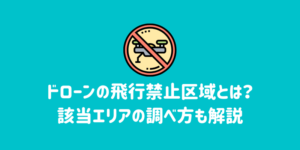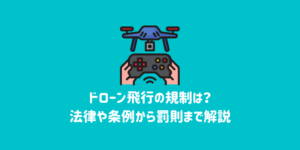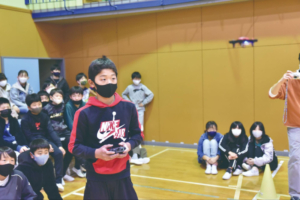
ドローンの有用性が認知されるとともに、国や自治体といった、それぞれのスケールで連携したあるいは独自の規制が進みつつあることは皆さんもご存知の事と思います。
アラブ首長国連邦(UAE)もその例外ではなく、ドローンを使った運送業がスタートする、無人のパトカーを巡回させる計画づくり、などの先進的な試みが見られる一方で、個人がドローンを扱うことに関しては慎重に、かつ急ピッチで法整備が進められているところです。
そして、法による規制が急激に進むということは、関係者に困惑を招く事態が増えるということでもあります。
Al Saeedy氏は2年前にドローンを購入。ところが、購入後に新しい航空法が施行され、所有には政府への届け出が義務付けられました。彼はまだ届け出が済んでいないため、現在はドローンの利用を控えている状態です。
政府への届け出だけでなく、UAEは今後輸入されるすべてのドローンに関しても、「制限条項」に合致しているかを税関で検査することにしています。この検査を通過するためには、事故が起きた際に所有者を追跡するために使われるシリアルナンバーが本体に記載されているかという点に加え、サイズが適切か、目的に応じた動力を備えているか、電波周波数は認可された帯域か、など多くの要件をクリアする必要があります。さらに個人所有の場合、シリアルナンバーを備えた新しい製品を購入するか、保有しているものに新たに組み込むか、などで対応する必要があるだけでなく、調査、開発などの認可された理由がない場合、撮影や録画といった機能を持つことが許されなくなります。
これだけでもかなり厳しい処置に思えますが、特に重視されているのが「ジオフェンス」チップの搭載義務です。
「ジオフェンス」とは、GPS機能と連動して「仮想の境界線」に対して働く機能の総称です。ドローンの場合は本体に内蔵されたGPSを用い、指定した空域を自動的に航行させたり、離陸地点に自動帰還させたり、特定の「立ち入り禁止」空域には接近できなくする機能を持たせるためのものです。
DJIやParrotといったドローン開発・販売メーカーの一定以上の価格帯の主要な製品には「ジオフェンス」による立ち入り禁止機能が標準搭載されているものが多いですが、「ジオフェンス」機能に対応していない廉価な製品や個人オーダーで製作されたハンドメイド品・改造品などは「制限条項」をクリアできないことも多く、実質的に締め出されると見ておかしくないでしょう。
これらの動きは昨年、ドバイ国際空港でドローンが空路に侵入したいくつもの事件を受けてのものです。世界中の空港がドローンの空路侵入リスクに頭を痛めていますが、ドバイ空港でのトラブルのようなケースで機体やスタッフの配置に障害が起きると、数分のうちにも膨大なコストが発生する深刻な事態になっています。
Hosam Zaher氏は1年ほど前にドローンを購入。ドローンが付近に侵入したことによりドバイ空港の飛行機に影響がでた事件を踏まえ、彼はドローンの個人利用にも注意が必要なことに理解を示しています。と言うのも、彼自身が砂漠でのドローン操縦中に墜落させてしまった経験があり、「どこであっても事故が起きるリスクはある」と感じているからだと言います。Zaher氏は航続距離4kmの長距離飛行ドローンを商用目的で購入しましたが、今後合法的にオーナーとなるためには届け出だけでなく講習の受講も必要となり、ドローンを所有することのハードルが高くなったと感じているようです。
ドローンに対する法規制は自治体単位の提言や禁止によるものもあれば、製品の持つスペックを重視して禁輸処置にする国も登場してきました。国をまたいだ遠出はしないというドローン所有者でも、基本的な安全確認や自分のホームでの法整備の動きについては常にアンテナを張っておく必要があります。
UAE ‘closes the gate’ on drone imports that fail to meet new criteria
Every imported drone will be halted by UAE customs and tested to ensure it matches new specifications for unmanned aerial vehicles.
Aviation officials said devices will be stopped at the point of entry and checked to determine if they are fitted with a number of safeguards.
These include a unique serial number that could be used to track the owner in the event of an accident and a ‘geo-fencing’ chip that would prevent it from being flown close to sensitive areas, such as an airport.
The move detailed by the General Civil Aviation Authority (GCAA), came amid broader moves to make private ownership in particular more controlled, following a number of incidents at Dubai International Airport last year.
“We are putting the control at the gates, and if a drone doesn’t meet the new standards then it can’t enter the country” said Ismail Al Balooshi, assistant director general of the GCAA.
It has also emerged that private owners, usually hobbyists, will either need to retrofit their drones so they comply with the new rules or buy new ones that have a serial number.
Tougher regulations are due to come into force in September but this is the first time officials have outlined the criteria devices will need to match. Last year, Paul Griffiths, CEO of Dubai Airports, said that “drones should not be sold or operated without a geofence in place” after three airspace shutdowns. Last week, London Gatwick had to divert five aircraft when a drone was seen near a runway.
The Emirates Authority for Standardisation and Metrology along with the Ministry of Interior, Telecommunications Regulatory Authority and the General Civil Aviation Authority have collaborated together to set out new regulatory standards for the use of drones.
The new specifications approved by the Emirates Authority for Standardisation and Metrology (ESMA) will include a surveillance system for deducting unmanned aerial vehicles.
They will demand that all drones must have a serial number which will be regulated by a surveillance system to tack their location.
The UAE’s import requirements will be based on “technical specifications such as size, power- depending on its use of purpose, radio frequency, serial number and if it has a geo-fencing program” as well as many other elements, explained Mr Al Balooshi.
There are three vital stages that will determine whether or not a drone can enter UAE territories, the first is by distributor transparency, second is customs – the drone must comply with the certificate importing standards and thirdly the outlet must fulfil the conditions otherwise the drones will be sent back, said Mr Al Balooshi.
Under the new law, drones owned by individuals will not be allowed to have features to film or record. Only those used for research, development and security purposes will be exempt. Commercial companies that use drones for filming have their own regulations to meet.
Airports worldwide have suffered financial losses as the costs of closure are very high, said Saj Ahmad, chief analyst at the London-based StrategicAero Research.
“Even a 30 minute disruption at somewhere like Dubai International can run into millions because of the cost of displaced airplanes, staff and re-scheduled flights to alternate airports”.
The UAE announced new measures, earlier this year to make it more difficult to buy a drone.
Authorities urged that the devices must be registered and users must complete a training course. This is intended to ensure only qualified hobbyists and professionals are using the devices.
Fines of up to Dh20,000 for unregistered drone users came into effect in May, but rules are also needed to tackle misuse.
Drone users hang up their controls amid stringent rules
The rules surrounding drone ownership have left owners confused at times. They differ for commercial filmmakers and private owners, and retailers have not always been clear about how to meet them.
Ahmed Al Saeedy, a 25-year-old Egyptian, bought his drone two years ago from Virgin Megastore without having to register the device nor apply for a licence.
Since then, new civil aviation rules have come into place and meant that drone users must register with the authorities, to ensure, for example, they could not cause an accident and escape without punishment.
“I used it back then, but when the licence decision was issued I stopped because I did not have time to apply for a licence,” he said.
Mr Al Saeedy would only use the 2-km range drone on holiday, and said only if he is clear about the regulations.
Fellow owner Hosam Zaher had to register his drone with the aviation authorities when he bought it more than a year ago.
“Obviously one cannot fly it around an airport. I know there were many incidents when Dubai airport had to stop flights because of that,” he said.
But the Palestinian said he now fears any use could lead to an accident that he does not want to risk. He lost control while flying it in the desert and it fell out of the sky.
“Thank God it crashed in the sand not on someone’s head” said Mr Al Saeedy said.
Mr Zaher, a multi-media specialist, bought a long range, 4-km drone more than a year ago and realised he would have to go through a training course to become a legal owner.
“We got it for our company, but they told us we had to register and choose an exam category and so on.”
With the announcement of new regulations, hobbyists will either need to update their drones so it can comply with the latest rules or get new ones to ensure that it has a serial number.





















